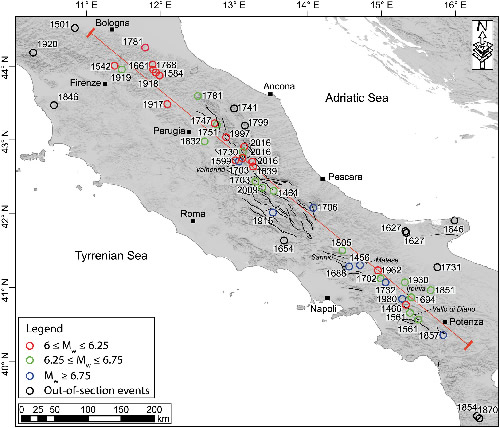The role of viscoelastic stress transfer in long-term earthquake cascades: Insights after the Central Italy 2016–2017 seismic sequence

Verdecchia A., B. Pace, F. Visini, O. Scotti, L. Peruzza, L. Benedetti (2018).
Tectonics, 37, https://doi.org/10.1029/ 2018TC005110.
Abstract
Central Italy is characterized by a network of active faults that interact in a complex manner. Coseismic Coulomb stress changes have been invoked by several authors to explain the concentration of moderate‐to‐strong earthquakes in this region, but none has considered the time‐dependent viscoelastic relaxation of the lower crust and upper mantle as a possible additional source of stress changes at a regional scale. Here starting from the 1915 Mw 6.9 ± 0.2 Fucino earthquake, we calculated the coseismic plus postseismic Coulomb failure stress changes (ΔCFS) due to eight moderate‐to‐strong earthquakes that have struck Central Italy in the last century and culminated with the 2016–2017 sequence. Results from this modeling coupled with some synthetic tests simulating normal fault earthquakes with different magnitudes allowed us to highlight the importance of postseismic processes. In particular, the viscoelastic stress transfer due to events of Mw ≥ 6.5 can modify the spatial distribution of ΔCFS on a centennial timescale and therefore trigger events at larger distances. In addition, using these results, we identified other earthquake clusters in the historical catalogue (last 618 years), which, like the 1915–2017 series, were potentially modulated by both coseismic and postseismic processes. Finally, considering our calculations combined with historical and paleoseismological data, we suggest that several faults in Central Italy may be at present close to failure.


Devi effettuare l'accesso per postare un commento.